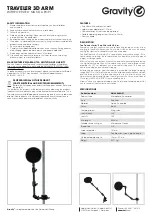
10 TEGAM WAY • GENEVA, OHIO 44041 • 440-466-6100 • FAX 440-466-6110
4-1
PRINCIPLES OF OPERATION
SECTION 4
PRINCIPLES OF OPERATION
Power Supply
The internal switching power supply U8 accepts nominal line
voltages between 90 and 250 VAC 50/60 Hz, allowing
operation worldwide. C1, C2, U1, R1, R2 and R101 form a
constant current regulator set to approximately 758 mA for
charging the battery. D5 is used to isolate the AC power for
the battery. D7 serves to clamp the voltage to less than 5 V
when the battery is disconnected. The negative 3.6 volt power
supply for U2 and U10 is developed by U5.
Test Current Path
The test current used to perform the resistance measurement
originates from the b terminal connected to the +3.6
V power symbol at the emitter of Q1. It flows through Q1 into
the COM1 terminal of SW1 and out of the terminal selected by
the switch for the measurement range chosen. Each pole of
the COM1 section of SW1 is connected to a different tap on
the current sensing resistor string made up of R13, R48, R50,
R52 and R54. The test current flows into the sense resistor
string at the tap selected, out of R54 into D3 and out of D3 to
the I+ test jack. The external test leads conduct the current
through the resistance being measured and back to the I- test
jack, where it returns to ground and then to the battery -
terminal.
Test Current Regulator
The test current is controlled to a constant value for each
range with a feedback loop. The main loop amplifier is U9A.
The output of U9A controls the conduction of Q1 using Q2,
such that if the output voltage of U9A increases, the test
current increases. The inputs of U9A compare the voltage
across the current sensing resistor string with a 3 volt
reference voltage produced by U4, the voltmeter IC. The
voltage across the sensing resistor string is maintained at 1.5
V, half the value of the reference voltage because R9 and R11
















































